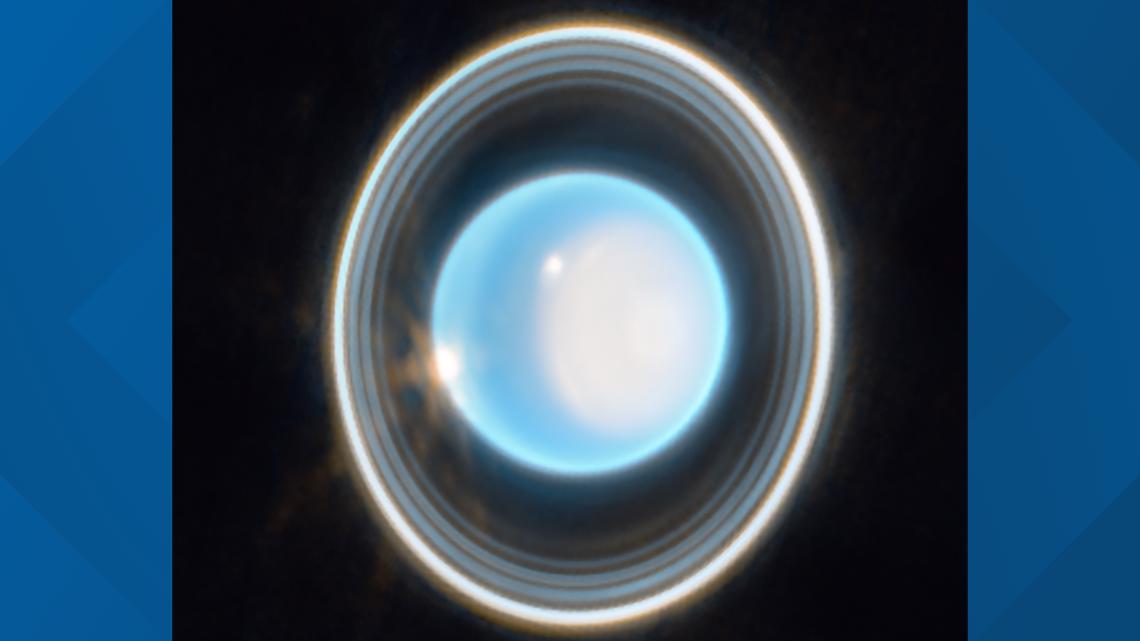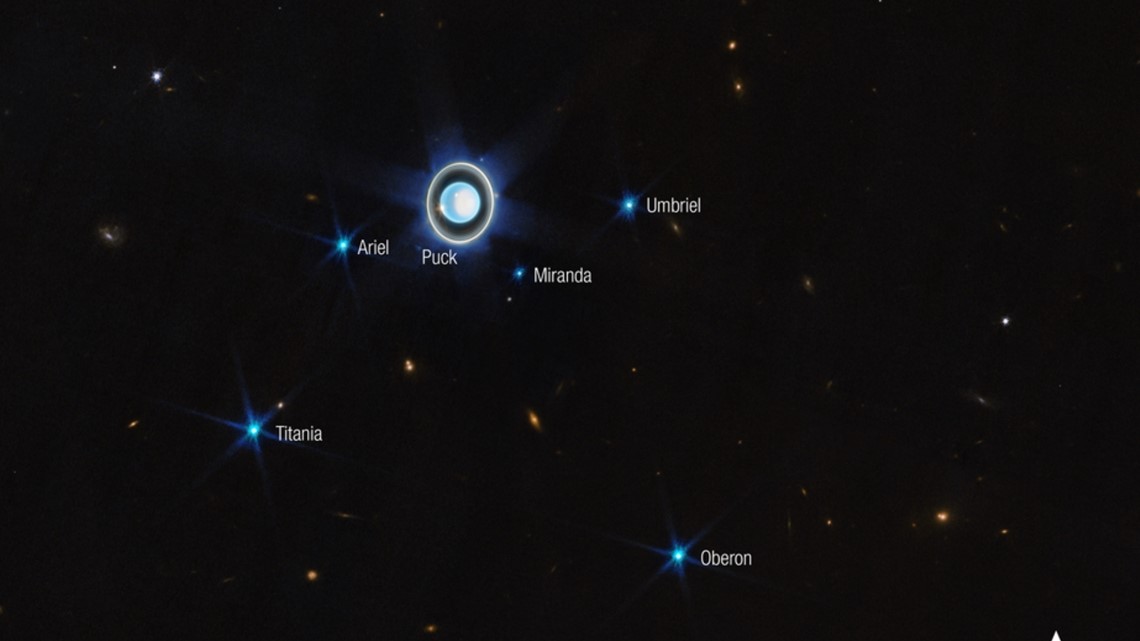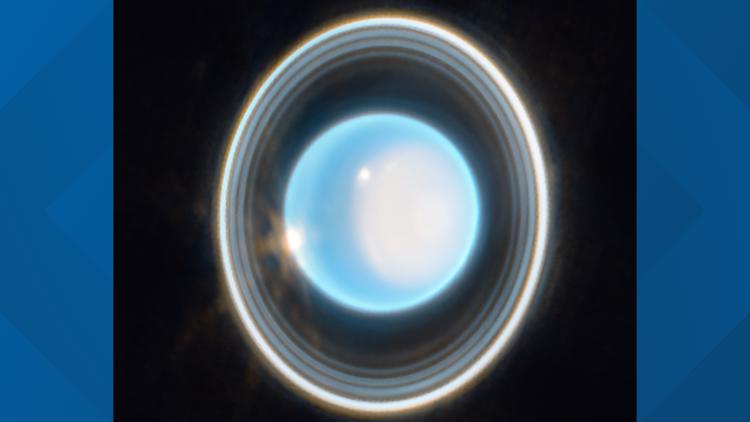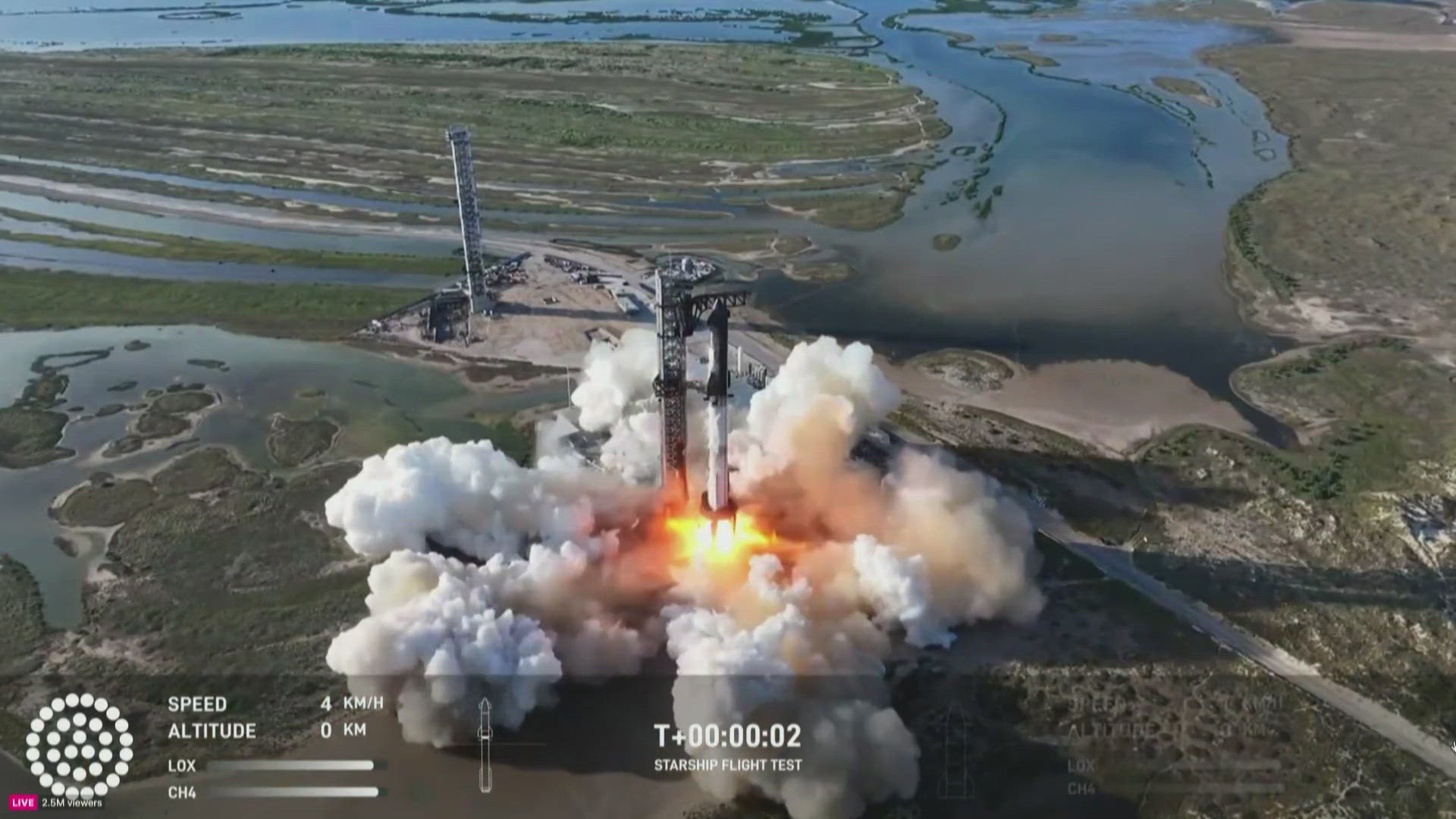TEMPLE, Texas — NASA's powerful James Webb Space Telescope recently captured a new, highly-detailed view of Uranus, offering a new look at some of the ice giant's "hidden" rings.
In total, Uranus has 13 rings, according to NASA. Eleven of those rings were captured using the powerful telescope's infrared imaging during a 12-minute exposure with two filters.
Nine of the captured rings are classified as the planet's "main rings," NASA said. The two other "hidden" innermost rings in the new photo are fainter and dusty, which makes it harder to see or capture, NASA said. These rings were first discovered in 1986 when the Voyager 2 spacecraft flew by the planet.
"Some of these rings are so bright with Webb that when they are close together, they appear to merge into a larger ring," NASA wrote in a news release.
NASA said it is hopeful that future Webb images will give a more detailed look at the other two remaining rings.
Story continues below.


In addition to the rings, the Webb telescope also offers another look at the planet's chemical make-up, as well as some of the planet's 27 moons.
Uranus is the seventh planet from our Sun with one of its years equating to 84 Earth years.
What makes it unique out of all of our solar system's planets is that it rotates on its side, which is why its rings are vertical instead of horizontal like Saturn's. This rotation also causes the planet to experience extreme seasons, according to NASA.
Webb's new photo shows that it is late spring at the planet's northern pole. It'll be another four years until Uranus' northern part experiences summer.




